Gold Coast development: Southport construction and changes to central business district
There’s something missing from Southport’s skyline which business leaders say is holding back billions in investment. Now, the silver bullet to the Coast CBD’s problems can be revealed.
Gold Coast
Don't miss out on the headlines from Gold Coast. Followed categories will be added to My News.
Plans for a $300M business and legal “towers of power” project will be put on the fast-track to solve the Gold Coast’s critical shortage of office space and revive the Southport CBD.
A pair of new reports – by real estate firms CBRE and Colliers International – both reveal office vacancy rates are at their lowest level since the global financial crisis and any reprieve is several years away.
Business leaders want the council to throw incentives at developers to build prime office space in a bid to make up for the shortfall, which they warn is preventing the Coast from attracting major corporate powerhouse.
With just 10 years until the city co-hosts the Olympic Games, Mayor Tom Tate said it was critical to rapidly create more office space to help attract larger companies.
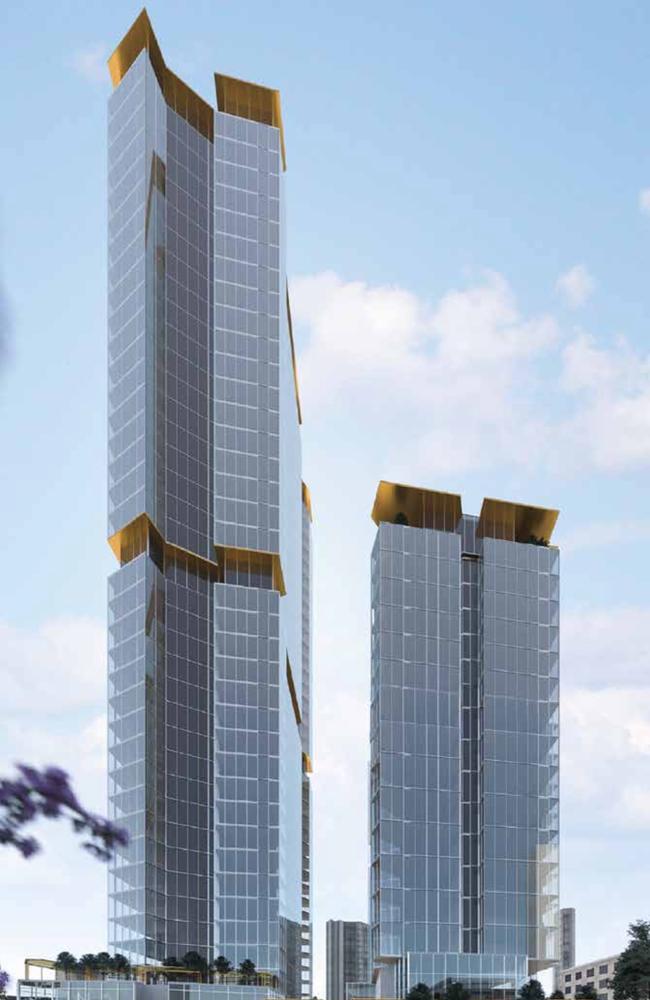
The Gold Coast City Council will appoint a chief investment officer in the new financial year who will be tasked with making the project a reality and supercharging the CBD.
“It’s challenging as the focus over the past two years has been on residential construction,” he said.
“The lack of quality commercial floor plates highlights that a green star, legal super tower in Southport would be appealing for many clients. That concept, potentially on the site of Mal Burke car park, will be one of the early projects we will put in front of council’s new chief investment officer when they are appointed.”
Council and business leaders have long called for a centralised business hub, arguing it would unlock billions of dollars in stalled residential development in Southport and firing up retail shopfronts.
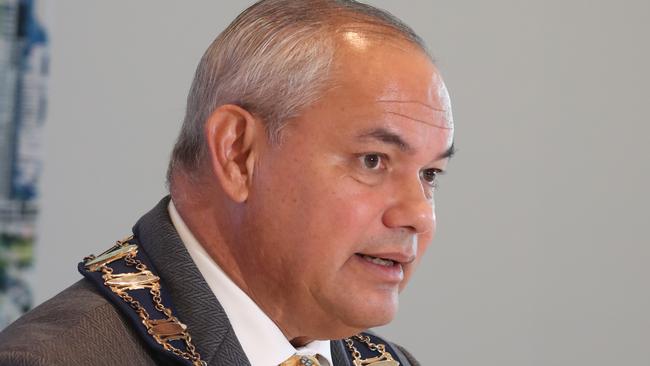
The towers would have room for government departments, barrister chambers, courts and civic offices for the council’s CEO and staff.
The height and ultimate cost of the project would be determined by the market, but $380m was floated in 2018 when the idea was first proposed.
There was little political will from the state government back then. But momentum has now been building behind the project.
Real estate agent Roland Evans told the Bulletin earlier this month: “I have always been of the firm believe that Southport needs an instigator to kick it off as the CBD of the Gold Coast and in the short-term that means having council relocate lock, stock and barrel into Southport,’ he said.
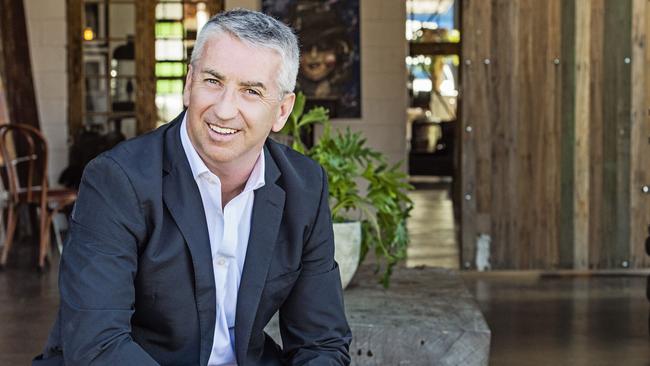
“If they did that you would start seeing some of those projects coming off the shelf.
“You’d be talking about putting 3000 employees into the suburb and that would make these owners far more bullish about going forward and committing to their developments.”
Cr Tate has called on both the state and federal governments to make “long-term” commitments through head lease arrangements for an agreed amount of space.
They would allow council to then put together a joint venture with private enterprise.
Robina and Varsity Lakes are set to overtake Southport and the coastal strip as the city’s largest office precinct before Christmas.
It comes on the back of booming business in 2021 in which vacancy rates fell 7.9 per cent on the back of communications firm Concentrix expanding.

Just two now office towers have been approved by council in the past 18 months and neither have begun construction.
The Colliers report warned it would be years before more would be available.
“No new supply has been added to the Gold Coast market over the last 12 months and in fact a reduction in stock levels has occurred,” the report reads.
Gold Coast Central Chamber of Commerce president Martin Hall said greater office space would be a game changer for the city’s CBD and called on developers to consider more mixed-used projects with both residential and office space.
“We need to have a grown-up conversation about this,” he said.
“With the Olympics coming, now is the time to ramp up.”
Fate of Southport’s biggest development bomb site decided
A long-empty development “bomb site’” that sold for nearly $30m a decade ago is going back on the market.
The former Star of the Sea College site in central Southport will be put to an expressions-of-interest campaign in coming months after six years of inactivity. It is 15,334sq m.
The block’s long-time owner, Garuda GC – the Australian wing of China’s Huixin Real Estate Group – never advanced its plans for a multi-tower residential and retail precinct.
Real estate agent Roland Evans, who represents the company in Australia, said the site would be one of the biggest single lots in the city to be put on the market.
“We will be doing something with it and the plan is to get it underway,” he said.
“The owners also have the retail which fronts the northern side of Nerang Street, as well as the development site at the back so we will be conducting a campaign in the not too distant future.”
According to documents filed with the Gold Coast City Council in 2014, its proposed features would have included residential, commercial and hotel towers, a pedestrian mall connecting the development to Nerang St, a historic plaza and retail space.

The Star of the Sea site is one of several city blocks in Southport to have remained dormant despite the area being given Priority Development Area (PDA) status in 2013 in the hopes of kickstarting billions of dollars in major projects and jobs.
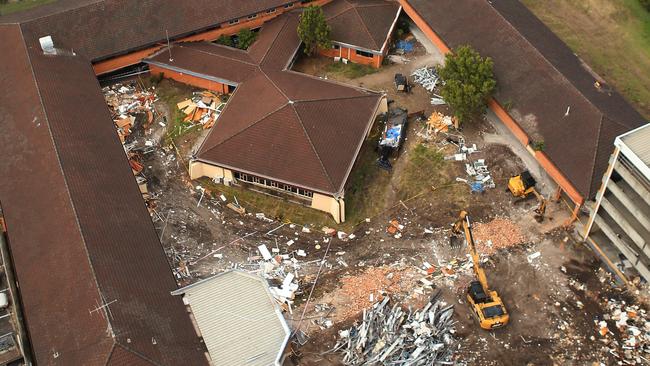
Instead, some developers gained council approval for development applications to lift the value of the site, before selling. It means the CBD has become littered with closed or for-lease shops, and billions of dollars worth of towers have failed to materialise.
Council is reviewing the PDA but the results will not be known until 2024.
Mr Evans, of Canford Estate Agents, said many owners of key Southport development sites had little incentive to push forward with their projects.

“I have always been of the firm believe that Southport needs an instigator to kick it off as the CBD of the Gold Coast and in the short-term that means having council relocate lock, stock and barrel into Southport,’ he said.
“If they did that you would start seeing some of those projects coming off the shelf.
“You’d be talking about putting 3000 employees into the suburb and that would make these owners far more bullish about going forward and committing to their developments.”
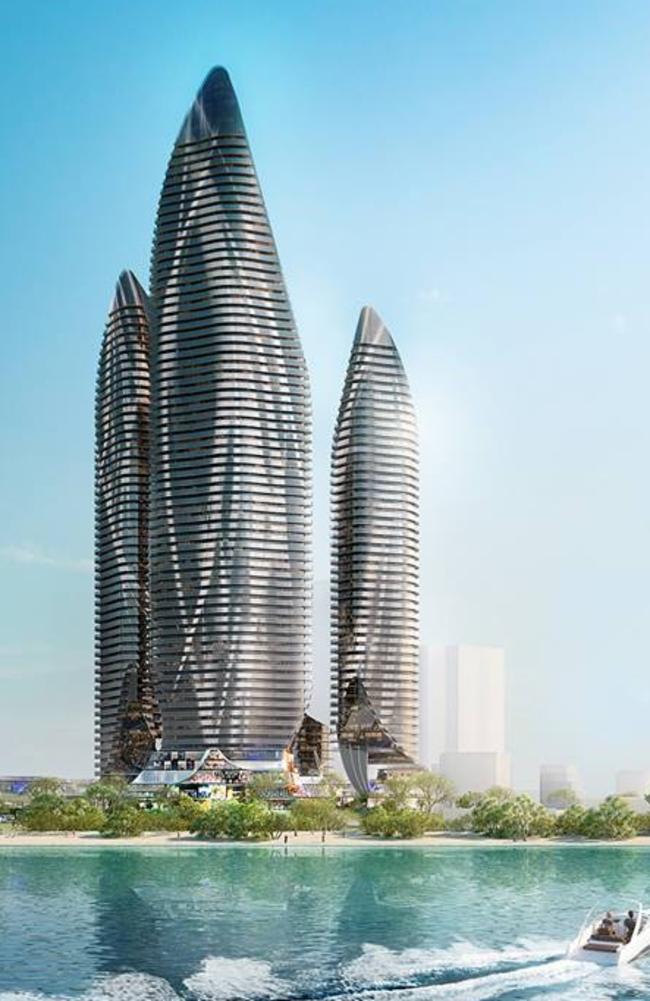
Revealed: Owners of development bomb sites ‘holding back’ CBD
Tyre-kicking developers will have to prove they have the money to build high-rise towers in Southport as part of a plan to stop the CBD from looking like a bomb site.
Southport was given Priority Development Area (PDA) status in 2013 in the hopes of kickstarting billions of dollars in major projects and jobs.
It did not happen.
It means the CBD has become littered with closed or for-lease shops, and billions of dollars worth of towers have failed to materialise.
The Gold Coast City Council will review the development scheme after 18 months of talks. However, changes will not be made until mid-late 2024, at the earliest.
Leading real estate agent Adam Grbcic, of Kollosche Commercial, said it was a “travesty” that the Southport CBD was not thriving, given building activity elsewhere on the Coast.
He said the area had a myriad of advantages, including the city’s courthouse and legal precinct, light rail, TAFE campus and private education groups, and access to the Broadwater Parklands and major arterial roads.
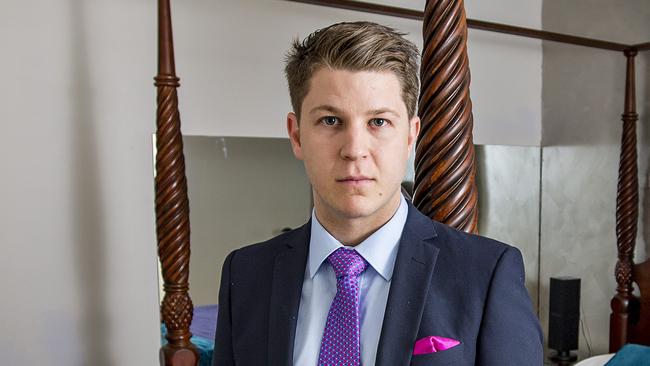
“What has happened is plenty of land-banking by developers but little evidence of tower plans making it beyond the planning phase,” he said.
“Meanwhile, some would-be developers have also used the PDA to fast-track approvals with the intention of selling the site with an approval in place because there is a perception that it makes the site more valuable.”
‘STRUGGLE’ STREET FOR BIZ IN ‘RUN DOWN’ CENTRAL CBD
Mr Grbcic said a DA could potentially add value to a site, but that was generally if the approval had been through the material change-of-use process and achieved extra height, density or additional land uses.
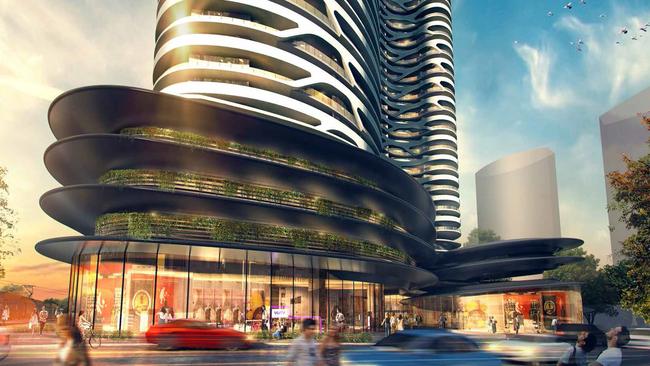
Mr Grbcic said a new method was needed to vet developers to determine if they were serious about building in the CBD.
“There is no point approving 200 units on a site where the owner doesn’t have the financial capacity or intention to deliver the project in the first place.
“The council should require developers lodging applications within the PDA to provide a
feasibility and needs analysis, which included construction costs, at the same time to prove the project was viable.
“When the development cost and demand for these proposals are highlighted, it will often
demonstrate the highest and best use is not a high-rise residential tower. This would reduce the workload for already overstretched council officers while helping to ensure the DAs being approved are feasible and realistic.”

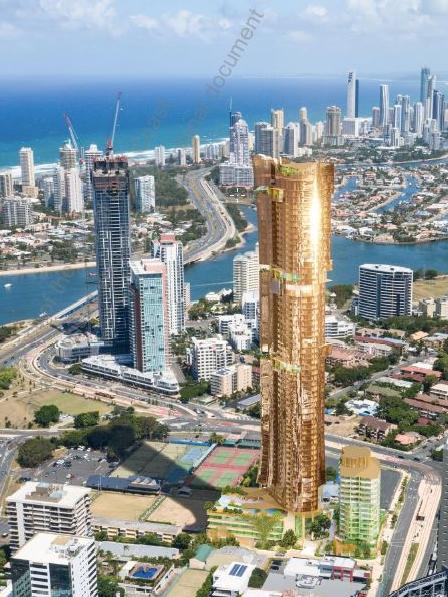
Within a year of the PDA being introduced, the council had received 29 development applications, worth at least $1.96bn, but much of it was for commercial space.
Some projects, including Meriton’s Sundale tower and the $500m Queen Street Village development, went ahead. However, several high-profile projects never got off the ground.
The withdrawal of the China market, bank lending practices and land-banking were all blamed.
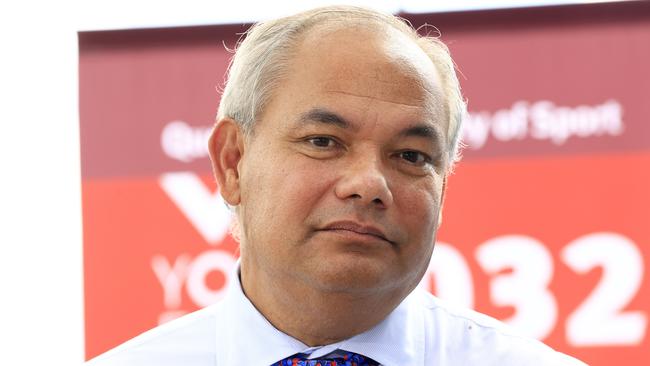
Mayor Tom Tate said city officers, state government and wider community would work in collaboration to look at all aspects of the PDA.
“We all know that the intent of the PDA is to stimulate development activity in our CBD. I’m confident any revised PDA will retain that focus as we all want to see the CBD evolve from both a planning and implementation perspective.
“The entire review may take up to two years. Councillors and the community will be kept informed as we progress.’’
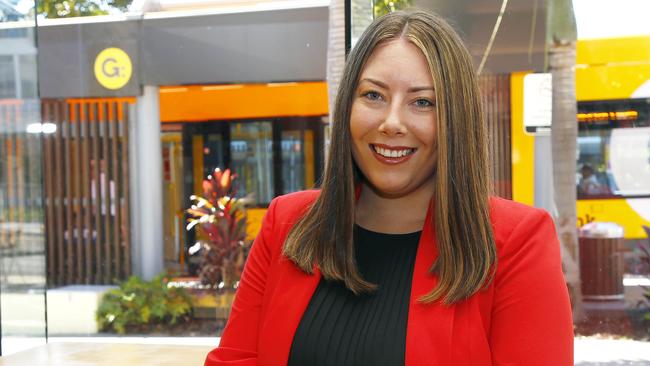
Southport Chamber of Commerce president Ariana Margetts said there was a growing perception the PDA had “fallen flat”.
“Reviews of this kind are costly and timely, but they are critical to be able to evaluate the performance of any public policy and we need to review the data and feedback to be honest about what worked, what didn’t work as expected, what some of the unintended outcomes were and most importantly – what we can do from a planning perspective to positively shape the CBD over the next few decades and beyond,” she said.

“While the past decade has definitely seen some fantastic residential, commercial and community developments come to life, the perception is the PDA has fallen flat in some places with unintended outcomes arising from the scheme, particularly around land-banking in some really prominent locations within the CBD.”
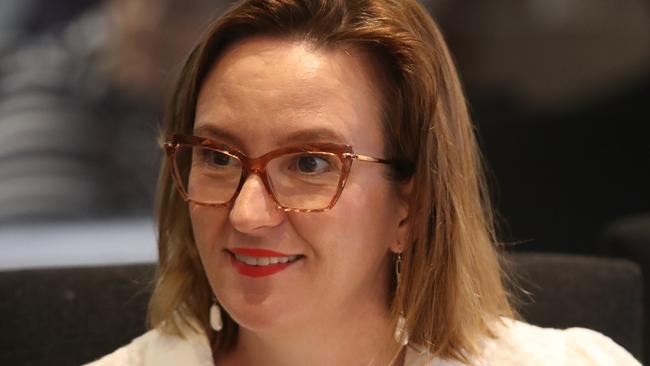
Area councillor Brooke Patterson said she had requested a review of the PDA to ensure “it is fit for purpose”.
“I have consistently maintained my concern that the current framework incentivises land-banking,” she said.
“This review gives us the opportunity to ensure planning legislation is aligned with our intent – to attract significant development into our CBD.”
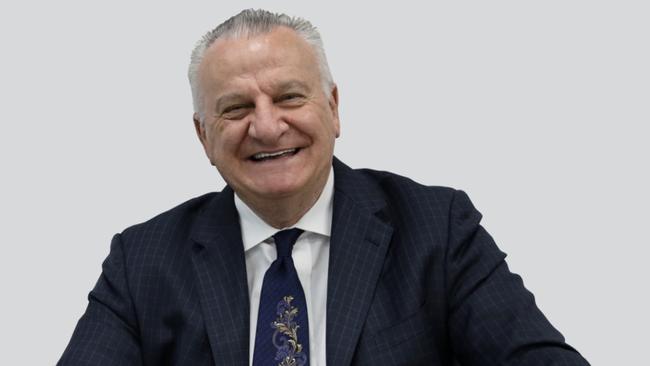
Gone: Historic Coast shop demolished for new unit block
One of the Gold Coast’s oldest buildings has been demolished to make way for a new unit building.
Southport’s old Queen Street convenience store was razed this week after 130 years to make way for a seven-level residential tower.
The wooden building’s facade, which has graced Southport since the late 19th century, is now gone.
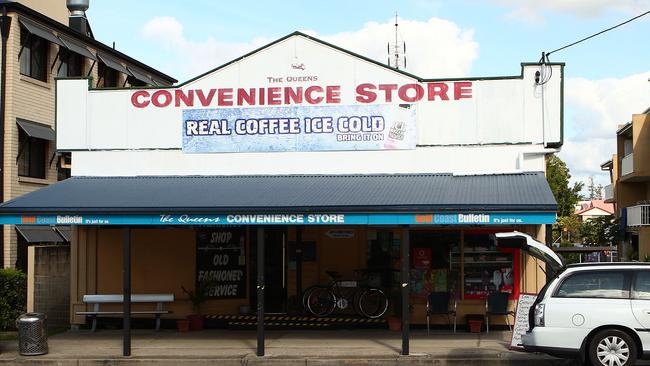
QJ Development Group Pty Ltd, which is linked to China-born investor Jian Lin, is behind the new project, which will have 11 luxury units.
The old shop was built on Queen St in the 1890s and was once the area’s Cobb and Co station.
The convenience shop closed in February 2018 and in recent years has been used as a boarding house.

It was planned to turn it into student accommodation but these fell through.
In September 2019, QJ Development Group filed plans with the council for its capsule hotel, which was to feature 124 rooms spread across its four levels.
It was scrapped as a result of the international tourism industry’s collapse in the wake of Covid-19.
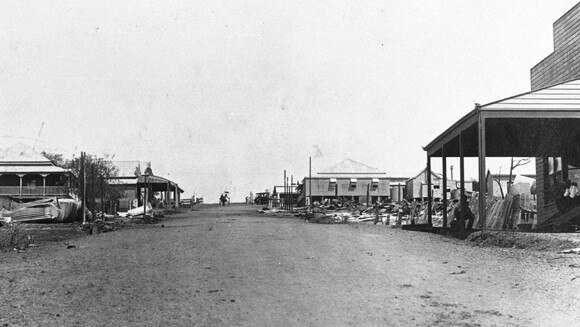
The development application for the tower was filed in late-2021.
It is the latest redevelopment of a historic Gold Coast building in the past decade.
The famous Miami Ice building was demolished and replaced by a tower of the same name.
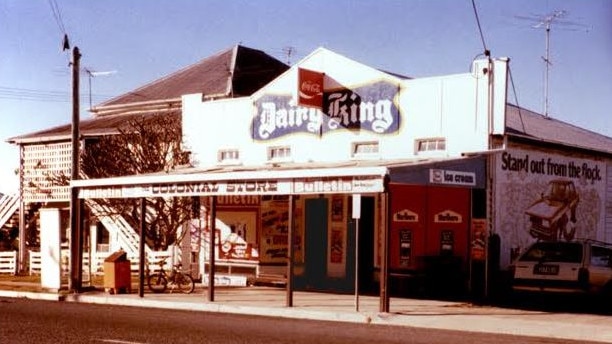
The council in May 2021 approved the redevelopment of the Old Burleigh Theatre Arcade to build a luxury unit tower.
The former site of Coolangatta’s historic Danceland was bought by a major Melbourne developer in late 2021, with developers planning to build a new tower which will retain the building’s 1930s-era dance floor.

Destroyed: Fate of beloved Coast icons
THE Gold Coast this week said goodbye to one of its oldest buildings.
The old Queen Street convenience store was demolished after a shelf life dating more than 130 years.
Despite being built in the 1890s, the wooden structure in central Southport was not heritage listed because of the significant number of modifications over the decades.
Much to its disappointment, the council was not informed of the building’s destruction until after it was completed.
It will be replaced by a seven-storey residential tower.
The demolition is another chapter in a long line of historic Gold Coast buildings to be met with bulldozers, further adding to the city’s reputation for destroying its heritage.
The fate of several others hangs in the balance.
In the past 70 years, Gold Coasters have seen some of its most prominent landmarks from its early decades disappear.
Here are some of the buildings we miss most:
MIAMI ICE
The historic Gold Coast landmark gained national attention appearing on John Farnham’s Two Strong Hearts music video. The ice works was built in 1947, using two former army huts, and had become an iconic structure on the corner of Gold Coast Highway and Kratzmann Ave. It was demolished in 2013 despite community attempts to save it.
A large tower bearing the same name stands on the site, with photographs of the historic structure and a replica of its sunny logo recreated.
SURFERS PARADISE HOTEL
Jim Cavill’s famous hotel became the centre of Surfers Paradise’s night-life when it opened in the 1920s.
It continued to be a popular venue through the late 20th century following Cavill’s death in the 1950s, even as the skyline began to change with high-rises arriving.
Developer Eddie Kornhauser bought the site in 1975 and spent the rest of that decade designing a plan for a high-end shopping centre.
The Bulletin at the time described it as “possibly one of the most valuable pieces of real estate in Australia and its proximity to the beach and commercial centre of the Gold Coast region makes it unique”.
The Surfers Paradise Hotel was demolished in the early 1980s to make way for the complex, which remains a major landmark today, even as its famous Hard Rock Cafe closed and operators look for a new home.
EL DORADO
The El Dorado was Surfers Paradise’s first motel, built in 1954 near the Gold Coast Highway on the site now occupied by the Crowne Plaza. It had just 12 rooms, flat roofs and was built of materials typical of the post-World War II period, including asbestos and cement cladding.
It was demolished in the 1980s to make way for the Crowne Plaza.
CHEVRON HOTEL
The pet project of Polish-born developer Stanley Korman, the hotel opened its first accommodation in June 1957. By September, a second accommodation wing had opened, as well as the Skyline Bar, one of the era’s major entertainment venues. The Chevron Hotel continued trading until the mid-1980s. It was demolished in 1987.
By late 1997 Singapore-based developer Hotel Properties Limited announced plans for a $350m, 1570-room hotel.
The project, to be the largest in Australia at the time, was tipped to have a “spaceship-like’’ design.
Among its features were to be a Planet Hollywood cafe, shops, including the Brash’s music chain, a rooftop helicopter landing pad and pool.
However, the Borbidge government intervened and the project stalled.
The site remained a notorious empty “bomb site” for years before developer Jim Raptis bought the land and built his Chevron Renaissance Shopping Centre, which opened in 2001.
MAGIC MOUNTAIN
Originally operating as a chairlift from 1962, Magic Castle opened in the mid-1970s and became one of the Gold Coast’s most popular landmarks.
After an expansion in the early 1980s, the future looked bright, with the park even gaining its own mascot, Raymondo Rabbit.
But by July 1985 the park’s owner, ASC Property Trust, put it on the market and called for tenders “because it differed from the trust’s other major activities, most of which involved shopping centres”.
It was later revealed ASC was selling because “the complex failed to show the returns expected of a $16m investment”.
It was tipped to sell for at least $10m. However, property industry figures were shocked when the initial offers were far lower – ranging from $4m to $6m.
With costs rapidly mounting, ASC, later known as Laureate Australia, closed Magic Mountain in 1987.
By 1993, six years after the original closure, the ruins of Magic Mountain were still standing, but were in increasingly poor shape.
In 1995 it was redeveloped by Raptis Group and Walker Bros to become the Magic Mountain Resort.
More Coverage
Originally published as Gold Coast development: Southport construction and changes to central business district





